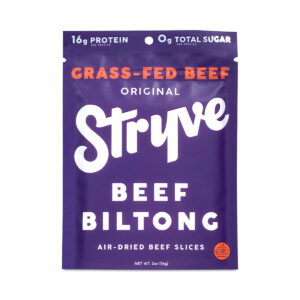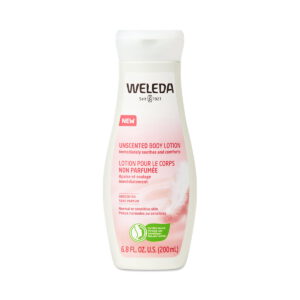- Healthy breakfast options
- Meal planning essentials
- Grocery shopping checklist
- Recipes for make-ahead breakfast
- Storage tips for meal prep
- Reheating and serving suggestions
When planning your grocery shopping for healthy breakfast meal prep, consider a few key strategies that not only enhance your meals but also keep your shopping efficient and budget-friendly. Starting with whole, unprocessed foods is essential. Focus on a variety of fruits, vegetables, whole grains, and protein sources that cater to your family’s dietary needs.
Healthy foods come in many forms. For breakfast, incorporating ingredients like oats, chia seeds, nuts, and seeds can boost nutritional value. Don’t forget about versatile vegetables such as spinach, bell peppers, and tomatoes, which can be easily added to breakfast burritos or omelets. When shopping for protein, look for organic or pasture-raised eggs and plant-based options like tofu or tempeh for those following a vegan lifestyle.
For forming a robust grocery list, consider these categories:
- Fruits: Bananas, berries, apples, and avocados
- Vegetables: Spinach, zucchini, kale, and bell peppers
- Whole Grains: Oats, quinoa, and brown rice
- Protein: Eggs, Greek yogurt, plant-based proteins (tofu, lentils)
- Nuts and Seeds: Almonds, chia seeds, and peanut butter
Be mindful of your shopping environment. When you’re at the grocery store, shop the perimeter first, where fresh produce, dairy, and meats are typically located. The center aisles generally contain shelf-stable items that can be less healthy. Furthermore, if you’re considering local farms, look for community-supported agriculture (CSA) options in your area for fresh, organic products. This not only supports local businesses but also reduces your ecological footprint.
For online shopping, ensure you’re purchasing from trusted sources. Look for retailers that offer organic produce and read reviews before buying non-perishables. When buying frozen or canned items, always check for added sugars, preservatives, and sodium levels. Coupons and bulk discounts can make high-quality groceries more accessible; consider joining loyalty programs to benefit from savings.
Don’t forget to incorporate flexibility in your meals. While it’s great to plan, having a few quick options like frozen fruit or pre-cooked grains on hand ensures you’ll always have a healthy breakfast, even during busy mornings. This way, your week preparation remains aligned with your nutritional goals without added stress.
Meal planning essentials
To make the most of your breakfast meal prep, it is vital to organize your planning process to ensure efficiency and variety. Start by selecting a dedicated day for your meal prep, which will help you allocate the necessary time and resources without feeling rushed. Many choose Sunday as the ideal day for meal prepping, as it allows for a smoother transition into the week. However, feel free to select a day that aligns better with your schedule.
Next, outline your weekly breakfast menu. This step will facilitate focused grocery shopping and minimize food waste. Consider creating a balance of meals that incorporate different food groups and flavors to keep your meals interesting. For instance, a meal plan might look like this:
| Day | Breakfast Option | Main Ingredients |
|---|---|---|
| Monday | Overnight oats with berries | Oats, Greek yogurt, mixed berries, honey |
| Tuesday | Veggie omelet with whole grain toast | Eggs, spinach, bell peppers, whole grain bread |
| Wednesday | Chia seed pudding | Chia seeds, almond milk, banana, and nuts |
| Thursday | Protein smoothie | Spinach, banana, protein powder, nut butter |
| Friday | Breakfast burrito | Tortilla, scrambled eggs, avocado, salsa |
| Saturday | Quinoa bowl with fruits | Quinoa, almond milk, seasonal fruits, maple syrup |
| Sunday | French toast with berries | Bread, eggs, cinnamon, mixed berries |
Consider the time and effort each recipe requires. Batch-cooking meals that can be prepared in advance, such as overnight oats or chia puddings, can save you time during the week. You can use containers to pre-portion these meals, making your weekday mornings much easier.
Another critical factor is having the right tools for your meal prep. Invest in quality food storage containers that are refrigerator and microwave-friendly, preferably BPA-free. Mismatched or inadequate storage can lead to inefficient use of fridge space and can affect the freshness of your meals. Use clear containers to easily identify what you have ready to go, preventing unnecessary food waste.
Additionally, establish a routine for checking your pantry and fridge on a regular basis. This prevents items from spoiling, allows you to rotate stock, and ensures your meal prep remains within the realms of healthy eating. Slow cooking and freezing can also extend the life of prepared meals, allowing you to maintain variety in your weekly breakfast without compromising quality.
Implementing a consistent meal planning strategy not only streamlines the process but also reinforces healthy eating habits throughout the week preparation. By establishing a structure, you can ensure that you are providing your body with the necessary nutrients to start each day right while minimizing stress associated with last-minute meal decisions.
Grocery shopping checklist

Having a well-thought-out grocery shopping checklist is crucial for successful breakfast meal prep. First, create a detailed list based on the recipes you’ve selected for the week and categorize items to make your shopping trip efficient. This not only saves time but also helps you avoid impulse buying, which can derail healthy eating habits.
Shopping tips to enhance your grocery experience:
- Stick to seasonal produce: Not only is seasonal produce fresher, but it’s also often cheaper. Visit local farmers’ markets to find high-quality fruits and vegetables that are grown nearby. Eating local reduces your carbon footprint and supports your community.
- Embrace beans and legumes: These are great budget-friendly protein sources that work well in many breakfast recipes. Options like black beans, lentils, and chickpeas can be spun into delicious veggie scrambles or added to smoothies for an extra boost.
- Investigate sales and bulk options: Keep an eye out for coupons, sales, and bulk-buy opportunities, especially for staples such as oats, quinoa, and nuts. These basic ingredients contribute to healthy breakfasts and can be stored for long periods.
- Consider organic options carefully: While organic foods can be more expensive, prioritize purchasing organic versions of the “Dirty Dozen,” a list of produce items that may have higher pesticide residues. Focusing on these items can make a significant difference in reducing exposure to harmful chemicals.
- Beware of misleading health claims: When shopping, educate yourself on food labels. Products labeled as “natural” or “low-fat” may still contain high amounts of sugar or preservatives. Always read ingredient lists to ensure you’re making the healthiest choices.
For online shopping, choose reputable grocery delivery services that provide fresh, organic options. Look for those that guarantee the freshness and quality of their products, especially perishable items. Before checking out, remember to review your cart for any unhealthy snacks or extras that may have slipped in during your selection.
Safety tips for online grocery shopping:
- Verify site security: Ensure the website is secure (look for “https://” in the URL) before entering personal information or making a purchase.
- Know your delivery policies: Familiarize yourself with return policies and delivery areas to ensure a positive shopping experience.
- Check reviews: Read customer reviews for insights on product quality and delivery reliability before trying a new online grocery service.
When you’re at the store, be strategic. Use your grocery checklist as a guide but remain flexible to adapt based on what’s available or on sale. For example, if fresh spinach is at a discount, consider substituting it for another leafy green in your planned recipes. Variety keeps meals exciting and ensures you’re packing in different nutrients.
Always keep an eye on expiration dates, especially for perishables. Select items that will last until you can use them throughout the week, ensuring that your meal prep remains consistent and your family enjoys wholesome breakfasts without waste.
Recipes for make-ahead breakfast
Breakfast meal prep can be both enjoyable and diverse with various make-ahead recipes that cater to different tastes and dietary needs. Here are some delicious options that are easy to prepare and will keep you fueled throughout the week.
One of the most popular and versatile make-ahead breakfasts is overnight oats. To prepare, combine rolled oats with your choice of milk or yogurt and allow them to soak overnight. You can customize each serving with fruits, nuts, or seeds. For example, a mix of oats, almond milk, chia seeds, sliced bananas, and a sprinkle of cinnamon creates a nutritious base. These can be stored in individual jars, making for a grab-and-go option perfect for busy mornings.
Another great recipe is for egg muffins. Whisk together eggs and your favorite fillings, such as diced bell peppers, spinach, onions, and cheese. Pour the mixture into muffin tins and bake until set. These muffins can be stored in the fridge and easily reheated, providing a protein-packed breakfast that is both filling and satisfying. They can also be frozen, making them a great option for longer-term meal prep.
For those who prefer a sweeter breakfast, consider making banana pancakes. Simply mash ripe bananas, mix them with oats and eggs, and cook like traditional pancakes. These are not only delicious but also packed with nutrients. Prepare a batch and freeze leftovers in individual packs for a quick breakfast option that only requires reheating.
Chia seed pudding is another simple yet delightful choice. Combine chia seeds with almond milk and your favorite sweetener, then let it sit in the fridge overnight. The seeds will expand, creating a thick pudding. Top with fruits or nuts in the morning before serving. This nutrient-dense option is rich in omega-3 fatty acids and can last several days in the refrigerator.
Lastly, breakfast burritos can be a hearty meal prep solution. Fill whole wheat tortillas with scrambled eggs, black beans, avocado, and salsa. Roll them up tightly, wrap in foil, and store them in the freezer. These burritos are perfect for reheating in a flash, ensuring a wholesome breakfast that can be enjoyed any day of the week.
“Success is the sum of small efforts, repeated day in and day out.” – Robert Collier
These ideas will not only simplify your weekly routine but also ensure that you’re starting each day with a healthy, satisfying breakfast that aligns with your meal prep goals. Preparing these dishes in advance will save you time during the week while promoting balanced nutrition for you and your family.
Storage tips for meal prep
 When it comes to meal prep storage, ensuring that your prepared meals stay fresh and delicious throughout the week is paramount. Using the right storage methods can significantly enhance the longevity and taste of your breakfasts. Start by investing in high-quality, airtight containers that are both microwave- and freezer-safe. Opt for glass or BPA-free plastic, as these materials are more durable and less likely to leach chemicals into your food. Clear containers are particularly helpful as they allow for easy visibility of your meals, reducing the chances of items being forgotten and spoiling.
When it comes to meal prep storage, ensuring that your prepared meals stay fresh and delicious throughout the week is paramount. Using the right storage methods can significantly enhance the longevity and taste of your breakfasts. Start by investing in high-quality, airtight containers that are both microwave- and freezer-safe. Opt for glass or BPA-free plastic, as these materials are more durable and less likely to leach chemicals into your food. Clear containers are particularly helpful as they allow for easy visibility of your meals, reducing the chances of items being forgotten and spoiling.
Labeling your containers with the date of preparation is a simple but effective way to monitor freshness. Generally, refrigerated meals should be consumed within 3-5 days. If you’re preparing items for longer storage, consider freezing portions, which can extend their shelf life for several weeks. However, be mindful of how you package these items; use freezer-safe bags or containers and expel any excess air before sealing to prevent freezer burn.
Another essential aspect of meal prep storage is proper cooling before refrigeration or freezing. Allow cooked meals to cool to room temperature for no more than two hours before transferring them to the fridge or freezer to minimize bacterial growth. Once stored, make sure to reorganize your fridge regularly to accommodate new meals. Storing food at eye level increases the likelihood of them being consumed first, preventing waste.
Additionally, take advantage of dividers and compartments if you prepare mixed meals. Keep wet and dry ingredients separate until you’re ready to eat—this preserves the texture and flavor of the components. For instance, store dressings or sauces in separate containers to avoid soggy breakfasts.
Finally, remember to consider portion sizes when preparing your meals. Pre-portioning your breakfasts into single servings not only makes reheating more convenient but also helps manage portion control throughout the week. This strategic approach fosters mindful eating habits and can contribute to sustained energy levels during busy mornings.
- How long can I store meal-prepped breakfasts in the fridge?
- Prepared breakfasts can typically be stored in the fridge for 3-5 days. For best quality and safety, consume them within this timeframe.
- Can I freeze my meal-prepped breakfasts?
- Yes, many breakfast items can be frozen. Ensure you use appropriate freezer-safe containers and consume them within a few weeks for optimal freshness.
- What containers are best for meal prep storage?
- Opt for airtight containers, preferably made of glass or BPA-free plastic that are microwave and freezer safe. Clear containers are recommended for easy visibility.
- How do I prevent freezer burn on my meal prepped items?
- To prevent freezer burn, use specialized freezer bags or containers and remove as much air as possible before sealing. Proper labeling and organizing can also help keep track of your items.
- Is it necessary to cool food before storing?
- Yes, allow your food to cool to room temperature before transferring it to the fridge or freezer. This minimizes the risk of bacterial growth.
- Can I reheat food directly from the freezer?
- It’s best to thaw frozen meals in the refrigerator overnight before reheating. However, many microwaves can reheat directly from the freezer—just ensure you follow manufacturer instructions.
- How can I keep different components of my breakfast separate?
- Utilize containers with dividers or separate smaller containers for sauces or toppings to keep wet and dry ingredients apart until you’re ready to eat.
Reheating and serving suggestions
When it comes to reheating your healthy breakfast meal prep, maintaining flavor and texture is key. Here are some practical suggestions to ensure each meal tastes just as good as it did when you first made it. For those utilizing the microwave, it’s essential to reheat in short intervals, stirring or flipping items halfway to promote even heating. Cover your dishes with a microwave-safe lid or a damp paper towel to retain moisture and prevent drying out. Ideal settings usually hover around 50-70% power for better consistency, particularly for scrambled eggs or oatmeal.
If you prefer using the stovetop, this method is often overlooked but can enhance the overall taste of your meal. Heat your breakfast items in a non-stick skillet over low to medium heat. Add a splash of water or vegetable broth to prevent sticking and help revive the dish’s moisture. This approach works great for items such as egg muffins and breakfast burritos, allowing them to warm up evenly while maintaining their original texture.
For meal prep containers that have been frozen, it’s best to transfer them to the refrigerator the night before to ensure safe thawing. If you’re short on time, use the microwave’s defrost function, followed by reheating. Always remember to check the temperature—your meals should be reheated to at least 165°F (74°C) to eliminate any harmful bacteria.
Pair your reheated meals with fresh toppings to enhance flavor and nutrition. For example, adding a dollop of Greek yogurt or a sprinkle of nuts can elevate your overnight oats or chia pudding. Fresh herbs or avocado can do wonders for an omelet or egg muffin. These simple additions provide a delightful contrast in texture and an extra punch of nutrients, keeping your breakfasts exciting throughout the week.
When serving your meal prepped breakfasts, consider the use of colorful plates or vibrant containers. Not only does this create an appealing presentation, but it also adds to the overall eating experience. Additionally, it can make a difference for picky eaters, especially in families. Create a “breakfast bar” with different toppings and spices available for each person to customize their meal according to their preferences.
Lastly, ensure to stay mindful of portion sizes and food safety. Always label items with the preparation date and consume meals within the recommended time frame. Implementing these reheating and serving techniques into your healthy breakfast meal prep will not only enhance your experience but also allow you to enjoy a nutritious start to each day.
New Customers Offer!
Free Gift for the new customer
$24 Value, When You Subscrib Visit Thrive Market












